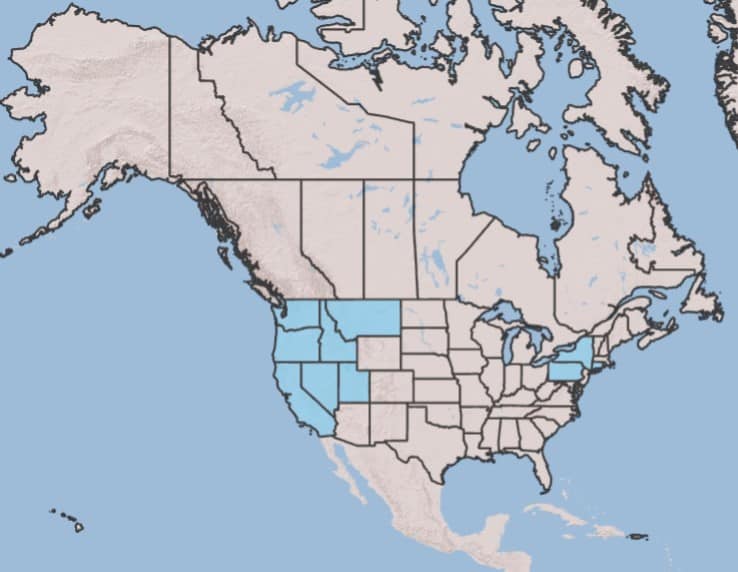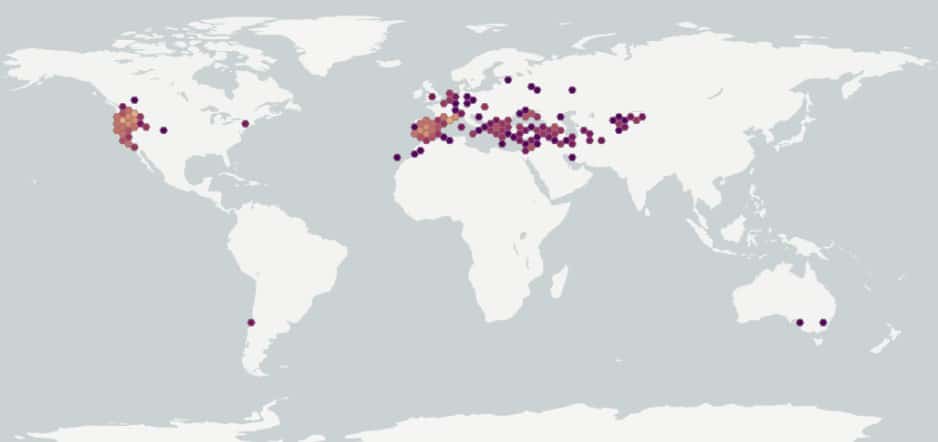Taeniatherum caput-medusae
Overview
Aperçu
Regulation :
Remarques Réglementation:
- CFIA Weed Seeds Order - Class 1: Prohibited Noxious Weed Seeds
Regulation Notes:
Prohibited Noxious, Class 1 in the Canadian Weed Seeds Order (2016) under the Seeds Act. All imported and domestic seed must be free of Prohibited Noxious weed seeds.
Distribution :
Répartition :
Native to northern Africa, Europe and western and middle Asia. Introduced in Australia, Chile and the United States (USDA-ARS 2021; CABI 2021). In the United States, it is found in the western states and introduced at other sites in the east, where it may not persist (Barkworth et al. 2007). Absent from Canada (Brouillet et al. 2010+).
Habitat and Crop Association :
Habitat et Cultures Associées :
Rangelands, annual grasslands, Artemisia tridentata (sagebrush) communities, Quercus species (oak) woodlands, roadsides and burned areas (Barkworth et al. 2007; CABI 2021). This species prefers soils with a high clay content to provide adequate water for establishment (Dahl and Tisdale 1975).
Economic Use, cultivation area, and Weed Association :
Utilisation économique, zone de culture et association de mauvaises herbes :
Duration of Life Cycle :
Durée du cycle vital:
Annual
Dispersal Unit Type :
Type d’unité de dispersion :
Floret
General Information
RENSEIGNEMENTS GÉNÉRAUX
Taeniatherum caput-medusae is believed to have been first introduced into the United States in livestock fur or in contaminated cereal grain, and continues to spread via travel corridors on vehicles and machinery (CABI 2021).
T. caput-medusae is competitive and forms dense stands in rangelands, altering their fire ecology by accumulating litter that is slow to decompose (CABI 2021). The range overlaps that of Bromus tectorum (downy brome), and is both an associate and a competitor of T. caput-medusae (Dahl and Tisdale 1975; CABI 2021).
.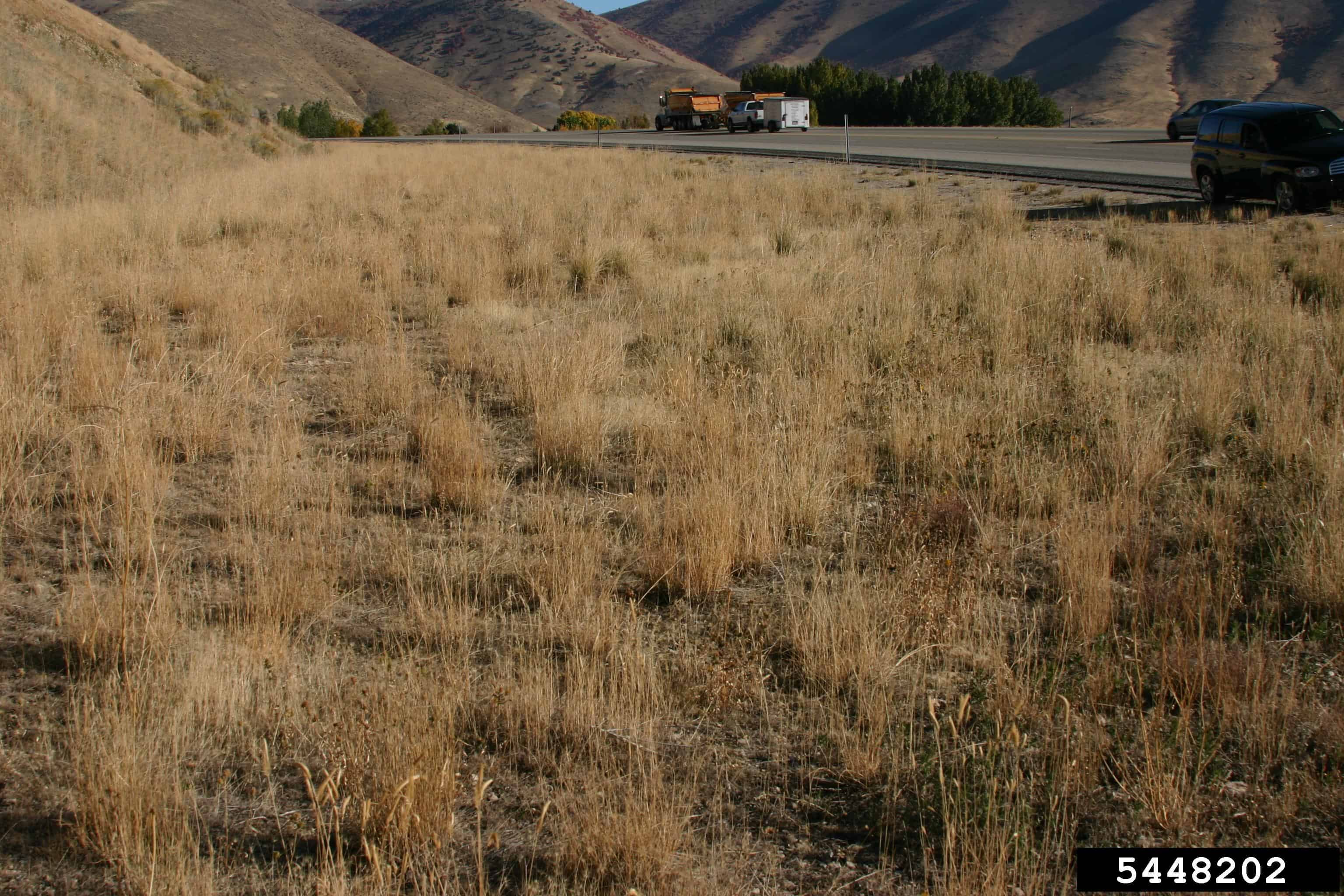
Taeniatherum caput-medusae infestation (Leslie J. Mehrhoff, University of Connecticut, Bugwood.org)
Identification
Identification
-
Spikelet
Size
- Spikelet length: 6.0 – 45.0 mm (Barkworth et al. 2007), neither glumes are as long as all of the florets
Shape
- Spikelet wedge-shaped
Surface Texture
- Spikelet surface is granular textured
Colour
- Spikelet is shiny straw yellow or yellow
Other Features
Glume awns
- Glumes have an awn, giving a tufted appearance to the spikelet when on the plant
- Glume length 7.0 – 80.0 mm (Barkworth et al. 2007)
Other features
- Spikelet with 2 or 3 florets (Barkworth et al. 2007)
- Upper florets are reduced in size and sterile (Barkworth et al. 2007)
-
Floret
Size
- Floret length*: 5.2 – 7.4 mm; width: 0.9 – 1.3 mm
*Note: minimum and maximum of 10 florets in a normal range of this species using specimen measurement (ISMA 2020)
Shape
- Floret is long, narrow oval shaped, gradually tapering into a long, flat awn; plano-convex in edge view
Surface Texture
- Lemma surface is granular textured
Colour
- Floret is shiny straw-yellow or yellow; generally with a dark brown nerve down the middle of the lemma
Other Features
Lemma awns
- Awn length: 30.0 – 110.0 mm (Barkworth etal. 2007); width: 0.6 – 0.8 mm (Frederiksen 1986)
- The awn is flat and appears as extension of lemma with short teeth along the edges
- Awns are generally broken during processing
Callus and Rachilla
- Rachilla is thin and straight
- Callus faces the palea side of the floret, with a small, round scar
Other features
- The palea is keeled, in-rolled, with a row of short teeth along the edges, truncate at the end
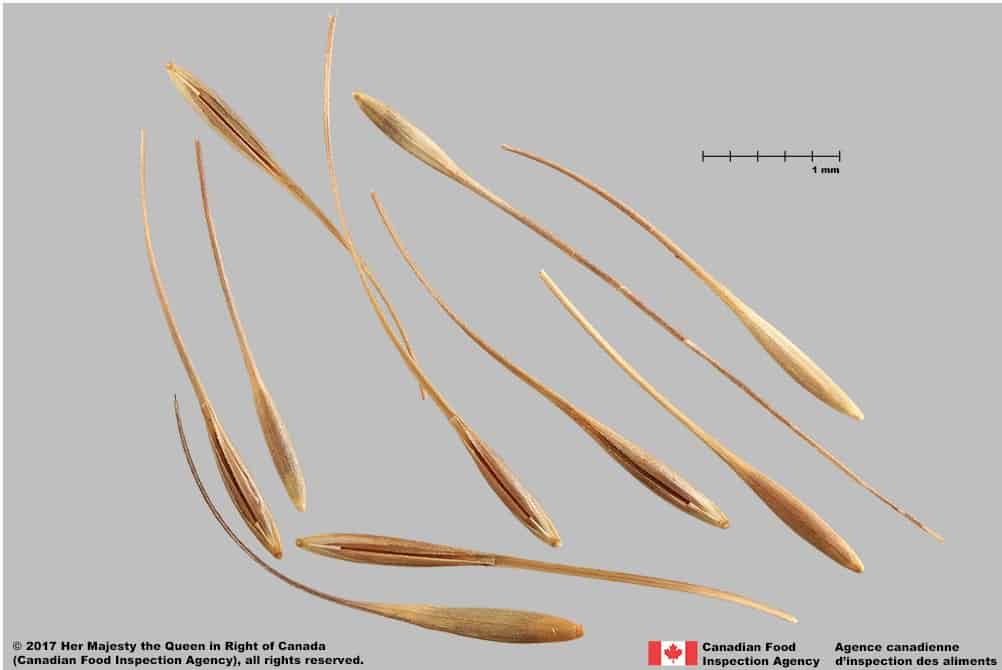
Medusahead rye (Taeniatherum caput-medusae) florets

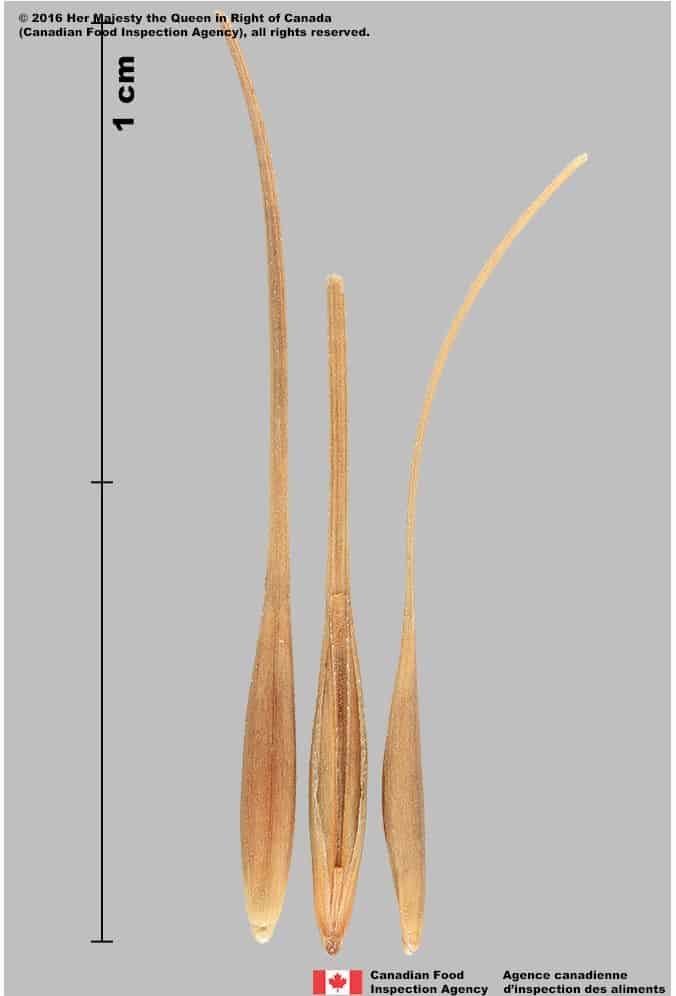
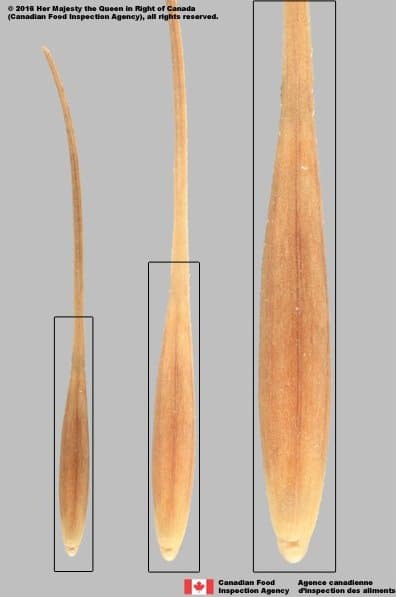
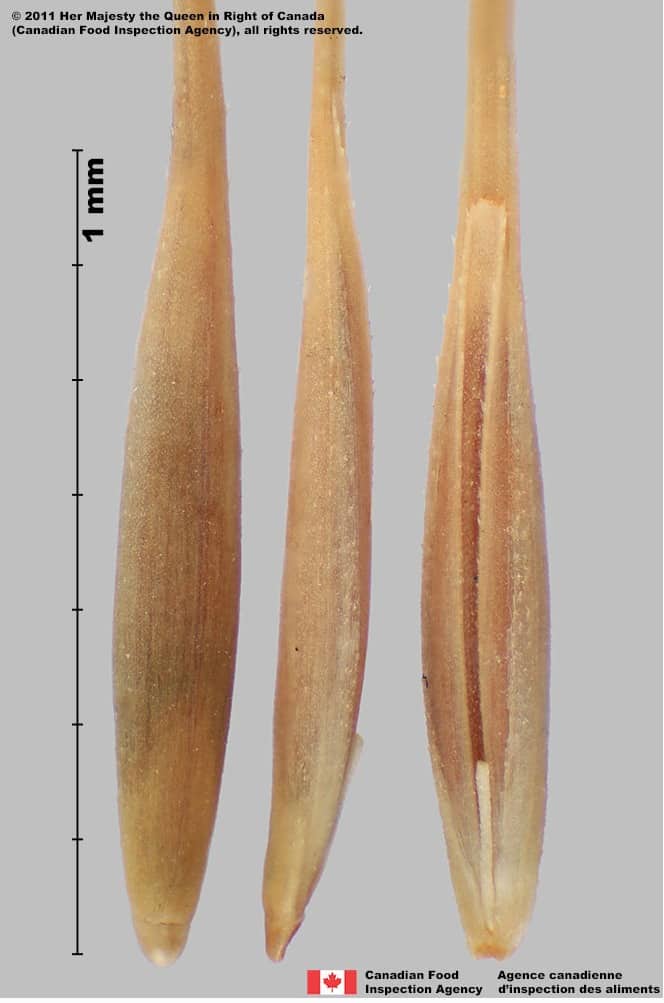
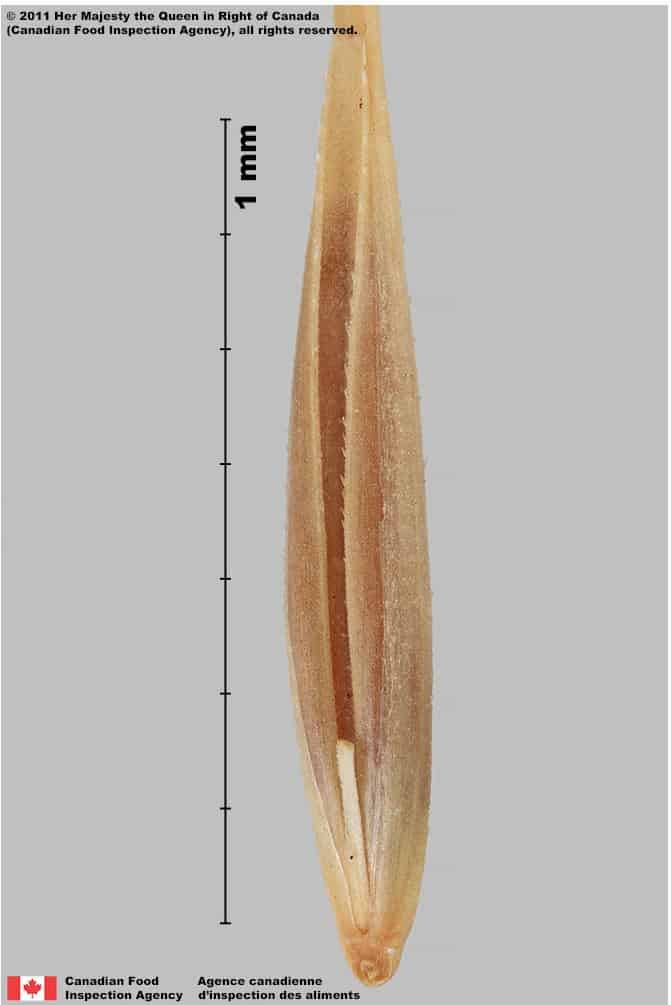
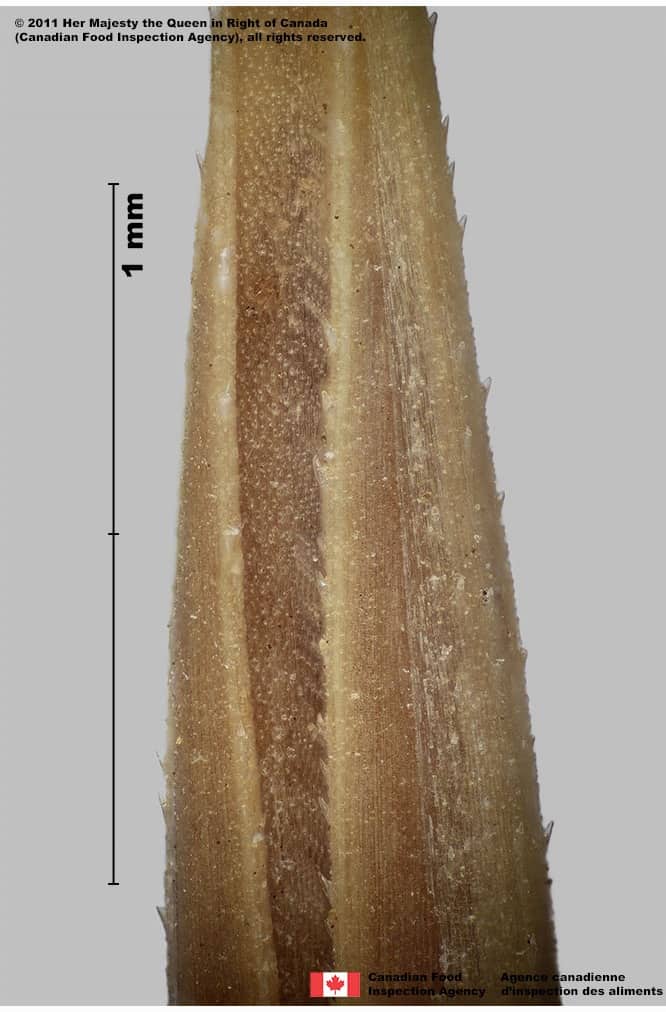
-
Caryopsis
Size
- Caryopsis length: 4.0 – 5.2 mm (Barkworth et al. 2007)
Shape
- Caryopsis is long oblong shaped
Surface Texture
- Caryopsis surface is smooth textured
Colour
- Caryopsis is greenish brown or brown coloured
Other Features
- Palea and lemma adhere to the surface of the caryopsis
-
Embryo
Size
- Embryo is a rudimentary size compared to the caryopsis
Shape
- Embryo is oval shaped, lateral position at one end of the caryopsis
Endosperm
- Endosperm is opaque white coloured
Identification Tips
CONSEILS POUR L’IDENTIFICATION
The stiff, inflexible florets with flat, long awns distinguishes this species compared to similar species with long, thin florets such as annual Bromus species. The palea with in-rolled edges, thin rachilla and dark brown nerve down the center of the lemma further distinguish T. caput-medusae from similar appearing species.

Medusahead rye (Taeniatherum caput-medusae) florets






Additional Botany Information
AUTRES RENSEIGNEMENTS BOTANIQUES
Similar Species
ESPÈCES SEMBLABLES
Similar species are based on a study of seed morphology of various species, and those with similar dispersal units are identified. The study is limited by physical specimen and literature availability at the time of examination, and possibly impacted by the subjectivity of the authors based on their knowledge and experience. Providing similar species information for seed identification is to make users aware of similarities that could possibly result in misidentification.
Bromus diandrus Roth (ripgut brome)
B. diandrus florets are longer (length: 20.0 – 35.0 mm, Barkworth et al. 2007), and have a leathery surface texture, T. caput-medusae lemmas are more stiff. B. diandrus florets are a reddish colour with thin palea teeth, while T. caput-medusae florets are straw yellow with thick palea teeth.
Click to select species
Cliquez pour sélectionner les espèces
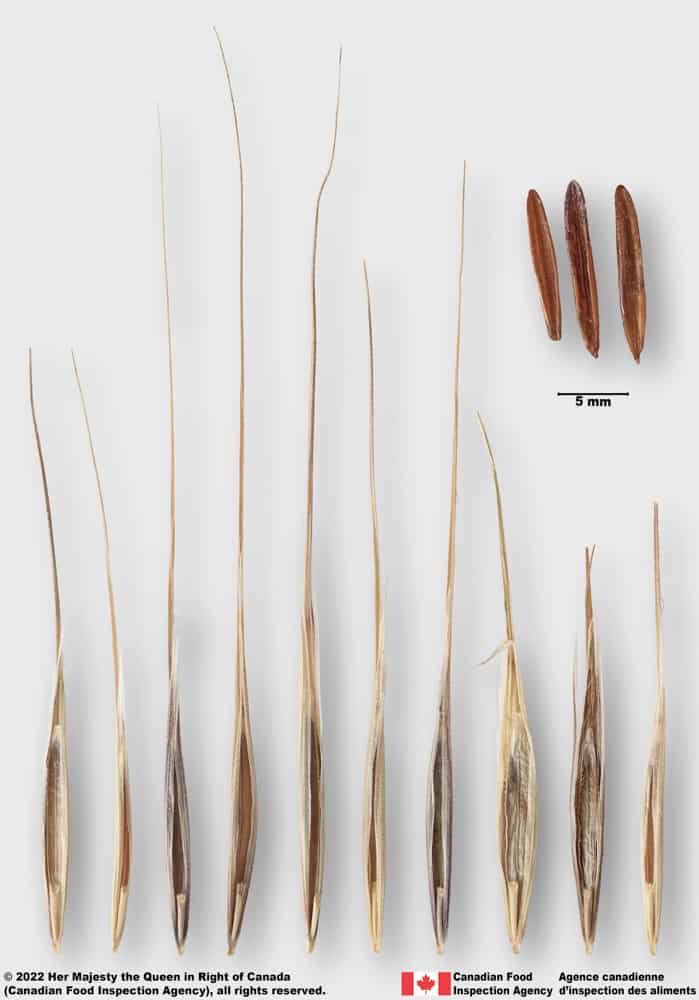
Bromus diandrus
Comparison Window
Fenêtre de comparaison
MAIN SPECIES
ESPÈCES PRINCIPALES
Taeniatherum caput-medusae

Taeniatherum caput-medusae
Poaceae
Medusahead rye (Taeniatherum caput-medusae) florets
MAIN SPECIES
ESPÈCES PRINCIPALES
Taeniatherum caput-medusae

Taeniatherum caput-medusae
Poaceae
Medusahead rye (Taeniatherum caput-medusae) florets
MAIN SPECIES
ESPÈCES PRINCIPALES
Taeniatherum caput-medusae

Taeniatherum caput-medusae
Poaceae
Medusahead rye (Taeniatherum caput-medusae) florets
MAIN SPECIES
ESPÈCES PRINCIPALES
Taeniatherum caput-medusae

Taeniatherum caput-medusae
Poaceae
Medusahead rye (Taeniatherum caput-medusae) florets, lemma view
MAIN SPECIES
ESPÈCES PRINCIPALES
Taeniatherum caput-medusae

Taeniatherum caput-medusae
Poaceae
Medusahead rye (Taeniatherum caput-medusae) floret, palea view
MAIN SPECIES
ESPÈCES PRINCIPALES
Taeniatherum caput-medusae

Taeniatherum caput-medusae
Poaceae
Medusahead rye (Taeniatherum caput-medusae) floret, top view
SIMILAR SPECIES
ESPÈCES SEMBLABLES
Bromus diandrus

Bromus diandrus
Poaceae
Bromus diandrus (ripgut brome) florets and caryopses
SIMILAR SPECIES
ESPÈCES SEMBLABLES
Bromus diandrus
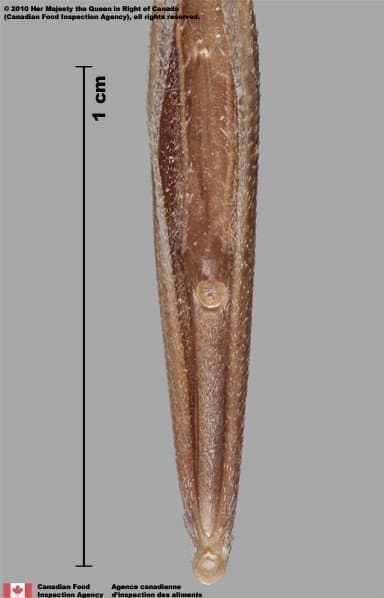
Bromus diandrus
Poaceae
Bromus diandrus (ripgut brome) floret
SIMILAR SPECIES
ESPÈCES SEMBLABLES
Bromus diandrus
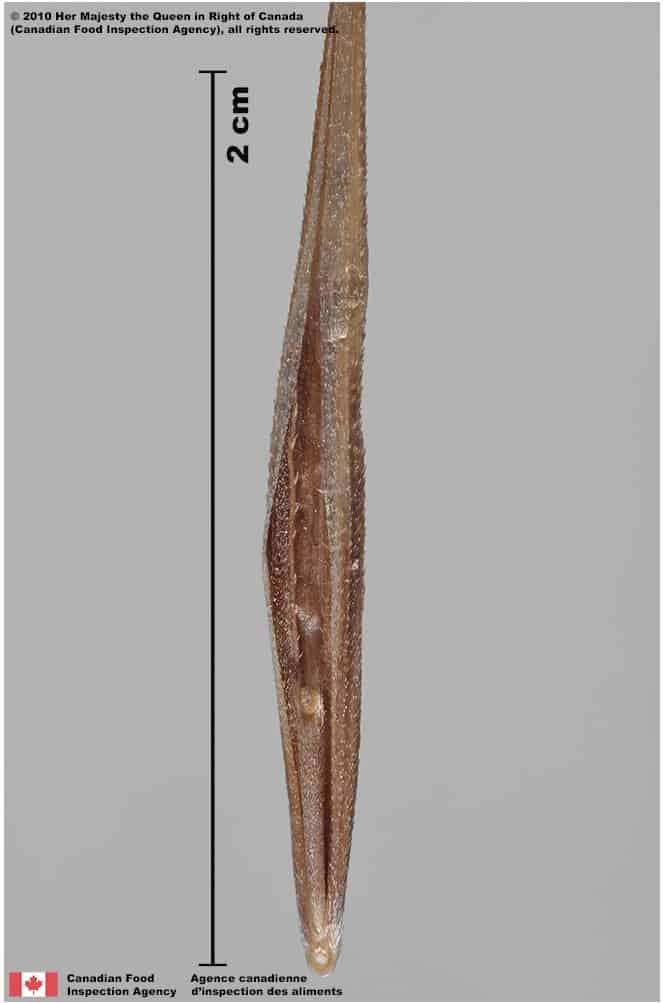
Bromus diandrus
Poaceae
Bromus diandrus (ripgut brome) floret
SIMILAR SPECIES
ESPÈCES SEMBLABLES
Bromus diandrus
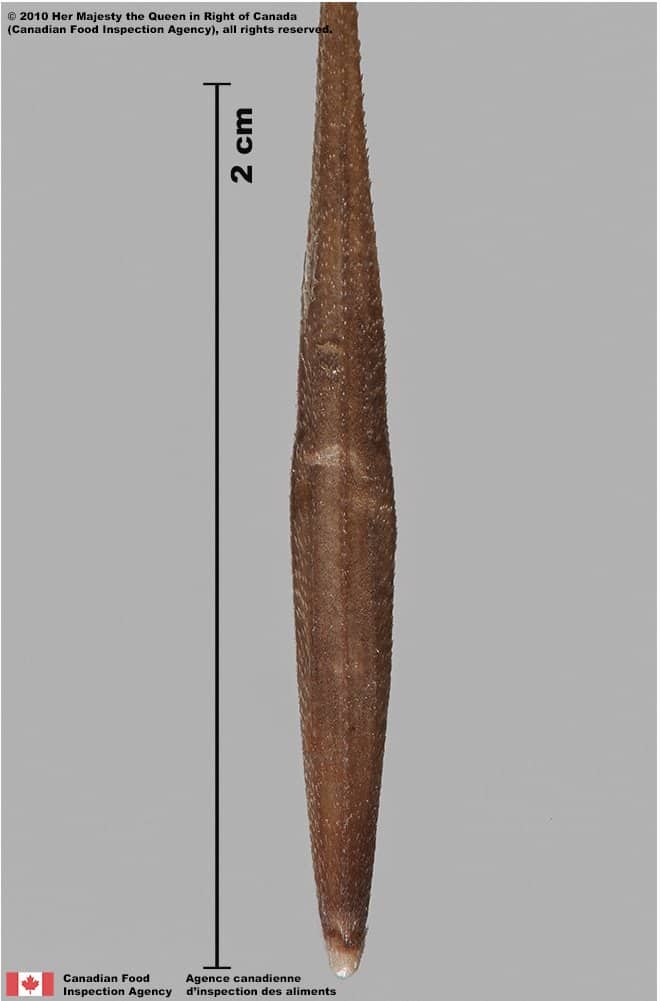
Bromus diandrus
Poaceae
Bromus diandrus (ripgut brome) floret
Need ID Help?
Besoin d’aide pour l’identification?
Reference(s)
Référence(s)
Barkworth, M. E., Capels, K. M., Long, S., Anderton, L. K. and Piep, M. B., (eds.) 2007. Volume 24. Magnoliophyta: Commelinidae (in part): Poaceae, part 1. Oxford University Press, New York, New York.
Brouillet, L., Coursol, F., Meades, S. J., Favreau, M., Anions, M., Bélisle, P. and Desmet, P. 2010+. VASCAN, the database of vascular plants of Canada. http://data.canadensys.net/vascan/ Accessed April 1, 2021.
Centre for Agriculture and Bioscience International (CABI). 2022. Invasive Species Compendium, CAB International, Wallingford, UK. https://www.cabidigitallibrary.org/journal/cabicompendium Accessed April 1, 2021.
Dahl, B. E. and Tisdale, E. W. 1975. Environmental Factors Related to Medusahead Distribution. Journal of Range Management 28: 463-468.
Frederiksen, S. 1986. Revision of Taeniatherum (Poaceae). – Nordic Journal of Botany 6: 389- 397.
Global Biodiversity Information Facility (GBIF) Secretariat. 2022. https://doi.org/10.15468/39omei Accessed via https://www.gbif.org/species/2705666 Accessed December 29, 2022.
Government of Canada (GC). 2016. Canadian Weed Seeds Order. https://laws-lois.justice.gc.ca/eng/regulations/SOR-2016-93/page-2.html (English) https://laws-lois.justice.gc.ca/fra/reglements/DORS-2016-93/page-2.html (French)
International Seed Morphology Association (ISMA). 2020. Method for Seed Size Measurement. Version 1.0. ISMA Publication Guide. https://www.idseed.org/authors/details/method_for_seed_size_measurement.html)
U.S. Department of Agriculture-Agricultural Research Services (USDA-ARS). 2021. Germplasm Resources Information Network (GRIN), https://npgsweb.ars-grin.gov/gringlobal/taxon/taxonomysimple.aspx Accessed April 1, 2021.
U.S. Department of Agriculture-Natural Resources Conservation Service (USDA-NRCS). 2022. The PLANTS Database. National Plant Data Team, Greensboro, NC USA. http://plants.usda.gov Accessed December 29, 2022.



